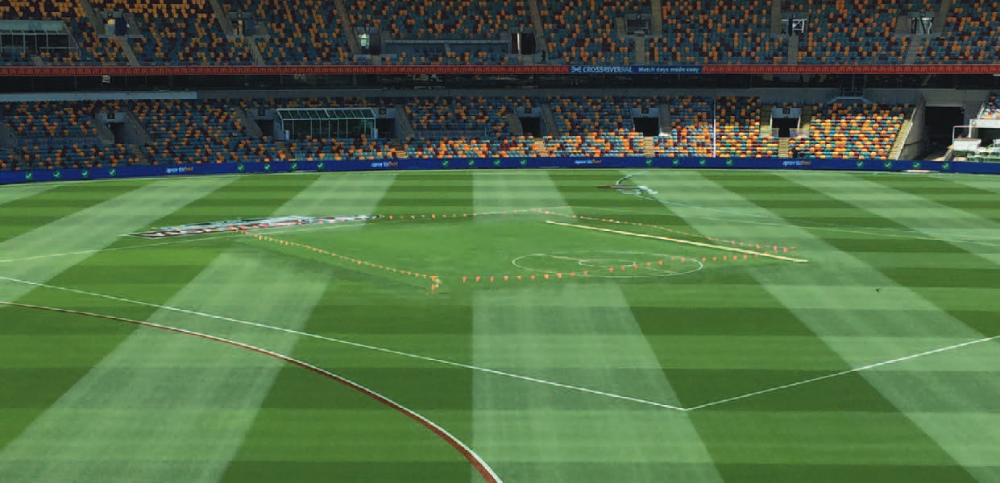Pythium Awareness: Products, Practice, and Prevention
The turf management industry has well and truly embraced prevention as the ‘norm’. Not just for Pythium but for pests and disease more generally – at least to the extent budgets allow. For Pythium however preventative management is the most sensible approach without doubt. Preventative approaches by their very nature don’t necessarily seek to stop something from occurring. While it's great if you achieve that; rather, the preventative approach seeks to greatly minimise the impacts from issues that do arise. Consistent with this, the Pythium threat is always ‘manageable’ but is greatly dependent on suitable awareness and appropriate precautions. It is a disease for which knowing both the biology of the disease and the tools available very well, and then deploying those tools tactfully for full effect determine your success.

Historical biology of Pythium
One of the key points to make about Pythium concerns its classification and evolutionary position in the world of turf pathogens. It’s very old. It's very different. It's not within the broader group we call fungi. It's closer to algae than some of the true fungi (e.g. dollar spot) and sits in a group known as the water moulds. Those last two points should resonate with people who like logic. The long-term development in high moisture environments so core to the evolution of the group suggests they love it, they need it, and inherently require it to flourish. We don’t want it, need it or wish to see it flourish in our turf so logic says remove those things or at least attempt to limit excess amounts of them it if at all possible. This is the ‘know the biology piece’. The other thing that probably needs to be stated with a theme of thresholds is we can’t work on an assumption fungal pathogens are removed from our turf environments by chemical treatments. They tend to co-exist in the turf environment perpetually, but we seek to keep them at non-threatening levels. This is reality. If we revisit our disease triangle of host, pathogen, environment we quickly realise two of the three corners are actually constants. The host is our turf and is always there, the pathogen is always around too, so we quickly turn to environment as the decider. We don’t control that corner but certainly can monitor it closely. Historically there has been a focus on the fact certain forms of Pythium do have a conducive environmental window of high humidity and high ambient temperatures. It’s still reasonably correct with some clarifications, but much of our responsiveness and planning has centred on this environmental window yet root affecting forms such as root rot that can affect poor draining fields are possibly aided more by free soil water than either of those factors, hence we can still see it mid winter, in cold climates. With this noted, it’s probably more worthwhile talking about the tools, the timings and the application processes as the concurrent consideration of these appear to be great determinants of success.
Tools we have - and understanding their attributes
Nuturf played a very big part in bringing a new Pythium chemistry in the form of Segway 400SC to market in 2018. It perfectly complements the pre-existing tools and adds further strength to the arsenal we can throw at this pathogen.
The stewardship messaging that has supported its introduction to market has had a great focus on the attributes of the new chemistry (new MOA with lower solubility), how it differs to pre-existing treatment options (less movement post application), and therefore how to capitalise on the inherent attributes of it (use it as your number one preventative). This awareness of comparative differences when considered with pre-existing options allows selective and targeted deployment of each to collectively deliver the best possible outcomes. This was to assist the ‘know your tools well’ piece.
Guidance on a management approach
Pythium is something best managed constantly, as opposed to managing in large hits retrospectively. Here in Australia we do have higher prevalence from Spring onwards, and our best approaches are to start early in ‘managing down’ the quantity of inoculum that can become active when the environment corner of the disease triangle goes the wrong way.
To aid this along we now have a useful combination of tools ranging from highly systemic dual direction foliar applied, to tools that are highly acropetal (upward) systemic that can be root applied, or tools that are of low solubility and therefore not likely to move too far from the location of initial application – be it foliage or roots. This is rather useful as Pythium can occur on the plant, in the plant, or in the soil environment, therefore we would appear to have a suite of management options that can be deployed in a programmed fashion whereby the combination of chemistry strengths, the location(s) of pathogens, and mobility (or lack thereof) of treatments can allow us to effectively treat multiple forms in multiple places accurately – and pre-emptively. Nice place to be.
Product application makes or breaks success
This background knowledge and umbrella view of management is superb, but can be let down at the final hurdle – product application. The above-mentioned differences in post application movement need to be factored in to the application process to get the initial product deposition just right. We need to understand both the start point and intended finish point of a product application. If making a foliar application use a nozzle / operating pressure / droplet spectrum / carrier volume combination that covers the entire plant to maximise the actual treatment dose doing the work. If wanting a root application, either to be drawn through the xylem to dose the entire plant post placement, or to locate a treatment around the full root zone to create a protective environment, ensure the nozzle / operating pressure/ droplet spectrum / carrier volume and post application irrigation steer the product to the appropriate start point and let the chemistry attributes then govern the end point. Don’t short change yourself with middle of the road application. Do it right (which means always consulting the registered product label), do it well, reap the rewards. This is the ‘deploy them for full effect’ piece.
How Nuturf can help you
Pythium is ever-present but not always on the rise. Nuturf can help you plan seasonal approaches that manage down the total risk posed. Your Territory Manager will guide you on planning appropriate preventative actions in the lead in to peak seasonal activity, and help set strong chemical barriers and/or the most suitable curative actions if activity is detected. We can develop programs that rotate chemistry groups drawing the best out of the options available to ensure maximum protection can be obtained within your budget.









